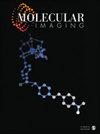体内干细胞的光学和磁共振成像多模态追踪
IF 2.4
4区 医学
Q3 BIOCHEMICAL RESEARCH METHODS
引用次数: 0
摘要
干细胞疗法在肿瘤、损伤、炎症和心血管疾病方面显示出巨大的临床潜力。然而,由于移植干细胞体内可视化的技术限制,体内干细胞的治疗机制和生物安全性尚不明确,限制了临床转化的速度。目前常用的体内干细胞追踪方法包括光学成像、磁共振成像(MRI)和核医学成像。然而,核医学成像涉及放射性物质,核磁共振成像在细胞水平的分辨率较低,而光学成像在体内的组织穿透性较差。单一成像方法很难同时达到体内成像所需的高穿透性、高分辨率和非侵入性。然而,多模态成像结合了不同成像模式的优势,以多维方式确定体内干细胞的命运。本综述概述了常用于追踪干细胞的各种多模态成像技术和标记方法,包括光学成像、核磁共振成像以及两者的结合,同时解释了相关原理,比较了不同组合方案的优缺点,并讨论了人类干细胞追踪技术面临的挑战和前景。本文章由计算机程序翻译,如有差异,请以英文原文为准。
Optical and MRI Multimodal Tracing of Stem Cells In Vivo
Stem cell therapy has shown great clinical potential in oncology, injury, inflammation, and cardiovascular disease. However, due to the technical limitations of the in vivo visualization of transplanted stem cells, the therapeutic mechanisms and biosafety of stem cells in vivo are poorly defined, which limits the speed of clinical translation. The commonly used methods for the in vivo tracing of stem cells currently include optical imaging, magnetic resonance imaging (MRI), and nuclear medicine imaging. However, nuclear medicine imaging involves radioactive materials, MRI has low resolution at the cellular level, and optical imaging has poor tissue penetration in vivo. It is difficult for a single imaging method to simultaneously achieve the high penetration, high resolution, and noninvasiveness needed for in vivo imaging. However, multimodal imaging combines the advantages of different imaging modalities to determine the fate of stem cells in vivo in a multidimensional way. This review provides an overview of various multimodal imaging technologies and labeling methods commonly used for tracing stem cells, including optical imaging, MRI, and the combination of the two, while explaining the principles involved, comparing the advantages and disadvantages of different combination schemes, and discussing the challenges and prospects of human stem cell tracking techniques.
求助全文
通过发布文献求助,成功后即可免费获取论文全文。
去求助
来源期刊

Molecular Imaging
Biochemistry, Genetics and Molecular Biology-Biotechnology
自引率
3.60%
发文量
21
期刊介绍:
Molecular Imaging is a peer-reviewed, open access journal highlighting the breadth of molecular imaging research from basic science to preclinical studies to human applications. This serves both the scientific and clinical communities by disseminating novel results and concepts relevant to the biological study of normal and disease processes in both basic and translational studies ranging from mice to humans.
 求助内容:
求助内容: 应助结果提醒方式:
应助结果提醒方式:


